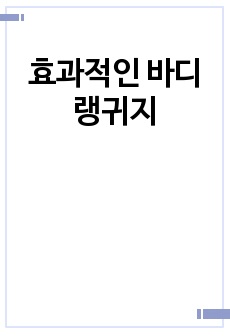지하철 한글 역명의 중국어 표기에 대한 고찰
* 본 문서는 배포용으로 복사 및 편집이 불가합니다.
서지정보
ㆍ발행기관 : 대한중국학회
ㆍ수록지정보 : 中國學 / 51권
ㆍ저자명 : 강경구
ㆍ저자명 : 강경구
목차
1. 서 론2. 골의 번역
3. 고개, 재 등 山系 역명의 번역
4. 水系 역명의 번역
5. 결 론
한국어 초록
Seoul Metro has set up a principle of liberal translation on naming its stations that it will use thematic role in naming stations in Korean to reveal the origin of the place name and is abiding by the principle. Busan Humetro also applies the same principle. In the view that it can complement the broad principle of transliteration, the thematic role can be fully considered and used in parallel as well. Especially, when thematic role is used, the place name in Chinese characters should be considered first. Furthermore, accurate understanding on the origin of the place name should be sought.However, when looking at closely, there are mistakes in many cases, such as that, the existing Chinese character place names are not considered in thematic role, or the origin of place names are misunderstood, or Chinese characters are wrongly applied.
In case of transliteration, there is no independent standard on writing Chinese characters for Korean pronunciation. Therefore, a definite implementation scheme which fully reflects 「Template(英汉译音表)」should be sought. Particularly, It should be considered that the common noun at the rear should be thematically translated or its original pronunciation be written as is. In common nouns at the rear which reveal the natural topography, there are many cases that the common nouns at the rear have lost the topographic informativity. Therefore, it would be appropriate to do transliteration for the whole place name in case the common noun at the rear does not contain the information of the relevant region. However, looking at the actual translation examples, the place names containing the old topographical information were thematically translated uniformly, for example, 나루(ferry)→渡口, 다리(bridge)→橋, 샛강(side river)→江, 내(stream)→川, 못(pond)→池, etc. In the cases that the station name contains the needed information, for example, 성당못(Catholic church pond)→聖堂池 in Daegu Subway, the thematic role is necessary, however, it should be noted that there is a possibility of conveying unnecessary information, like, 여의나루(Yeouinaru)→汝矣渡口.
In contrast to this, for the cases of public offices or institutions, it is basically necessary to transfer into corresponding offices or institutions in China. Presently, it is written literally as 시청(city hall)→市厅 or 구청(borough office)→区厅, but a way to change this to 市政府, or 区政府 should be considered. It would also be proper to write 검찰청(Public Prosecutors’ Office) to 检察院, rather than 检察厅. In cases that the Chinese character writings are not commonly used, like 政府厅舍, It would be also appropraite to try to find words which are commonly used, like 政府办公大楼, rather than writing as 厅舍. However, for the institutions like 国会议事堂, which does not exist in China, should be treated as exceptions. It would be awkward to translate it into 人民大会堂 overly. Because their roles are completely different each other.
On the other hand, in case of writing an English word place name into Chinese, it is necessary to judge whether it is a common noun or a proper noun. If it is a common noun, thematic role would be appropriate, and if it is a proper noun, transliteration should be done. The most problematic cases are when Chinese characters are written together while the English word place names are not translated; Centum City and Renecite Station fall under this category. For Centum City, translated words such as 仙登城 or 仙腾城, which have transliteration and thematic role together, could be suggested, and for Renecite, transliterations such as 日内西德 or 日内西特 could be suggested.
In translating Chinese words, it is particularly important to have uniformity whether it is by transliteration or by thematic role. For the case of 버스터미널(bus terminal), it would be embarrasing to write differently, like, 巴士客运站, 高速客运站, 客运站, etc. It is necessary to unify into one expression of, for example, 汽车客运站, or something else. Sometimes 삼거리(three way intersection) is written differently as 三岔路口 and 丁字路口, and this should also be unified. Besides, there are cases where the possibility of transliteration was suggested, like, 골(valley)→谷尔, 고개(pass)→谷给, 바위(rock)→巴伊, or 내(inside)→內. In these cases where the common nouns at the rear appear frequently, it seems necessary to form a consensus to unify the transliteration.
참고 자료
없음태그
"中國學"의 다른 논문
 中-韓 언어접촉과 어휘 차용의 새 국면 ― 5종 일간지의 중국어 차용어 표기를 중심으로17페이지
中-韓 언어접촉과 어휘 차용의 새 국면 ― 5종 일간지의 중국어 차용어 표기를 중심으로17페이지 현대중국어 虚词 ‘的’ 상(aspect) 자질 중한 대조 분석18페이지
현대중국어 虚词 ‘的’ 상(aspect) 자질 중한 대조 분석18페이지 浅谈韩国医疗旅游宣传网站汉译问题 ―以韩国政府机关相关网站为中心16페이지
浅谈韩国医疗旅游宣传网站汉译问题 ―以韩国政府机关相关网站为中心16페이지 『노자』, 그 ‘역설’의 문학을 논함22페이지
『노자』, 그 ‘역설’의 문학을 논함22페이지 조선시대 외교현장의『詩經』활용 고찰19페이지
조선시대 외교현장의『詩經』활용 고찰19페이지 『優語集』에서 보이는 배우와 孔儒의 갈등관계24페이지
『優語集』에서 보이는 배우와 孔儒의 갈등관계24페이지 李公麟의『五馬圖』연구 ― 宋代 天馬의 흔적19페이지
李公麟의『五馬圖』연구 ― 宋代 天馬의 흔적19페이지 『海國圖志』에 나타난 魏源의 世界認識 硏究23페이지
『海國圖志』에 나타난 魏源의 世界認識 硏究23페이지 沈從文의 여성 교유(交遊)와 여성형상18페이지
沈從文의 여성 교유(交遊)와 여성형상18페이지 한중 인문유대 담론과 방향에 관한 고찰19페이지
한중 인문유대 담론과 방향에 관한 고찰19페이지

























